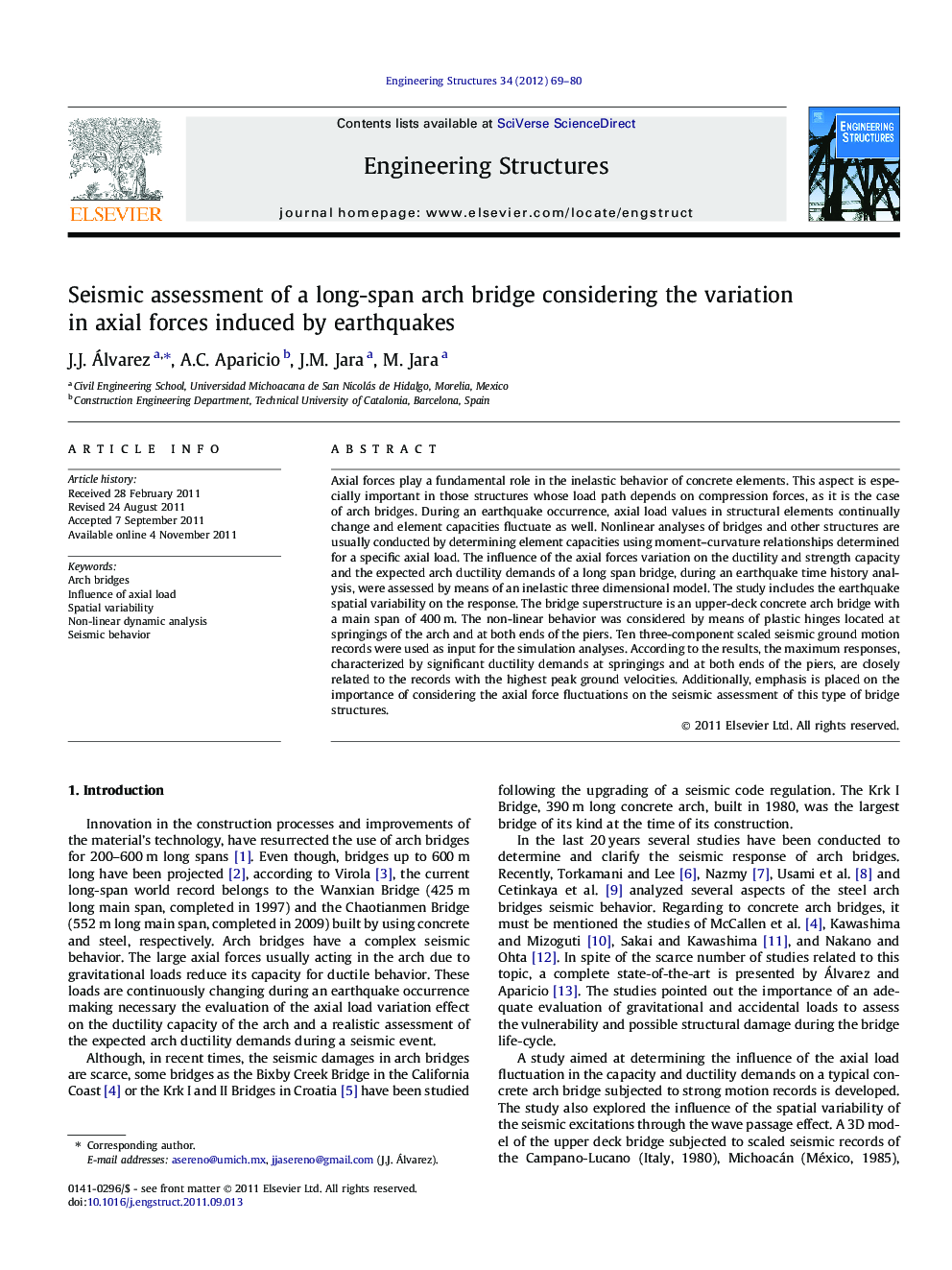| Article ID | Journal | Published Year | Pages | File Type |
|---|---|---|---|---|
| 267605 | Engineering Structures | 2012 | 12 Pages |
Axial forces play a fundamental role in the inelastic behavior of concrete elements. This aspect is especially important in those structures whose load path depends on compression forces, as it is the case of arch bridges. During an earthquake occurrence, axial load values in structural elements continually change and element capacities fluctuate as well. Nonlinear analyses of bridges and other structures are usually conducted by determining element capacities using moment–curvature relationships determined for a specific axial load. The influence of the axial forces variation on the ductility and strength capacity and the expected arch ductility demands of a long span bridge, during an earthquake time history analysis, were assessed by means of an inelastic three dimensional model. The study includes the earthquake spatial variability on the response. The bridge superstructure is an upper-deck concrete arch bridge with a main span of 400 m. The non-linear behavior was considered by means of plastic hinges located at springings of the arch and at both ends of the piers. Ten three-component scaled seismic ground motion records were used as input for the simulation analyses. According to the results, the maximum responses, characterized by significant ductility demands at springings and at both ends of the piers, are closely related to the records with the highest peak ground velocities. Additionally, emphasis is placed on the importance of considering the axial force fluctuations on the seismic assessment of this type of bridge structures.
► Importance of the axial load variation on the strength capacity of an arch bridge. ► Ductility demands at the springings of the arch and piers ends correlated to ground velocities. ► Variations of around 50% of the gravity axial loads at the springings of the arch. ► Capacity rotational ductility strongly dependent on the arch’s rib axial load. ► Spatial variability influence on displacements demands in three directions.
